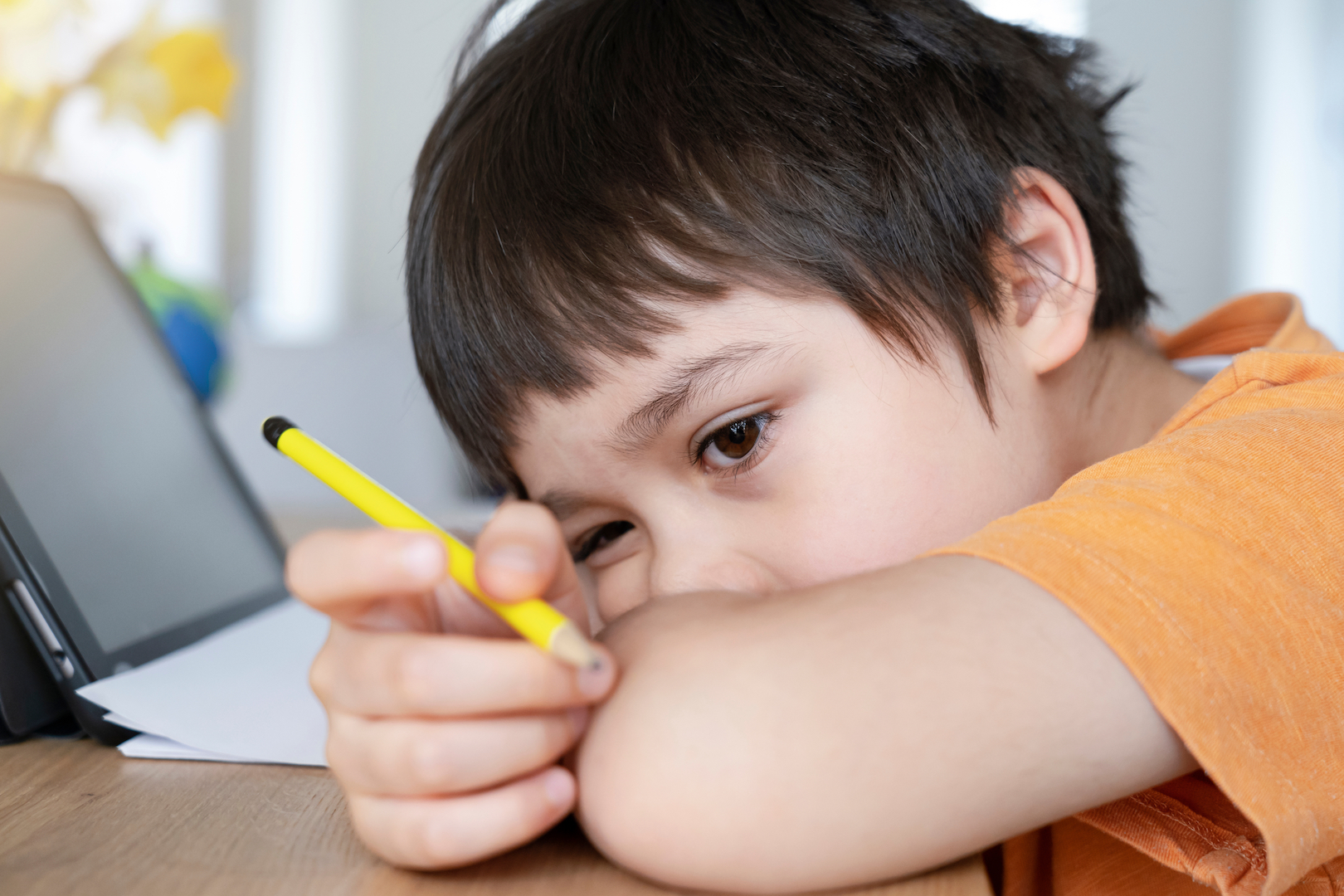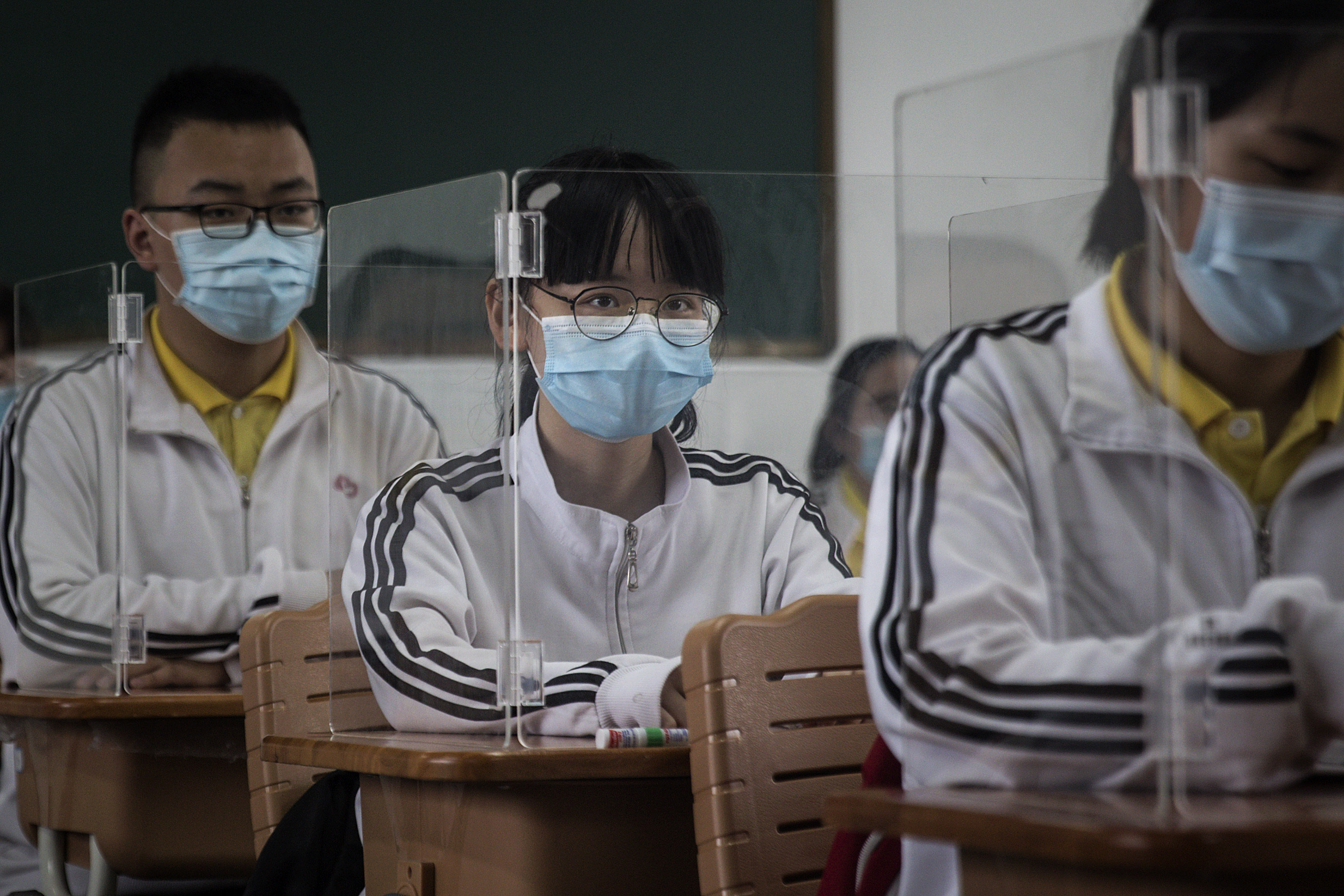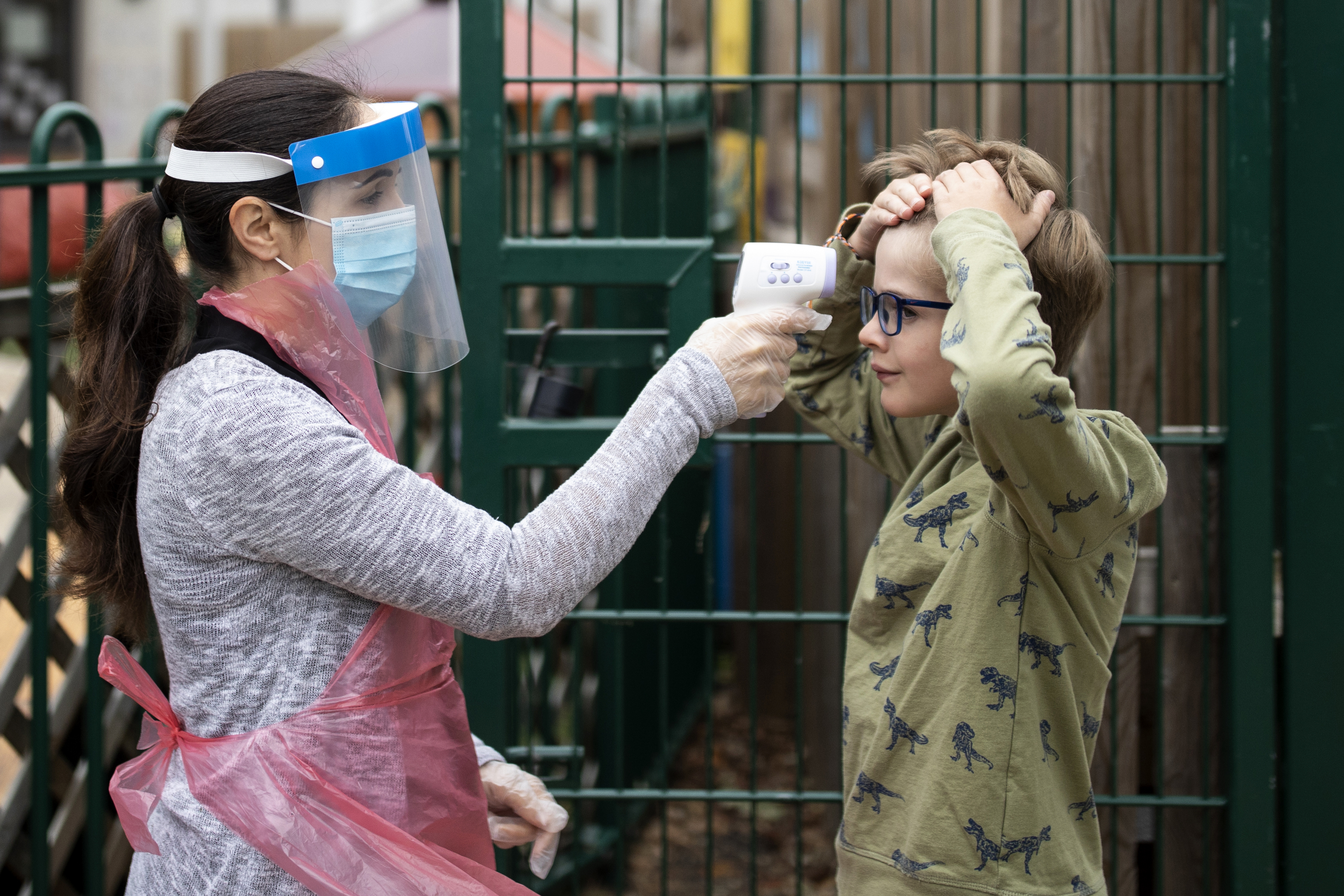Should schools reopen amid the pandemic?
U.S. educators are nervously awaiting the new school year as case counts across the country rise.

Editor's Note: This article was updated at 4:23 pm ET on July 21 to include results from a large study conducted in South Korea about virus transmission among household contacts.
Just a few months ago, Erica Fuhrman would spend her days teaching children with special needs alongside their typical curriculum how to use the toilet, how to wash their hands and how to communicate using symbols. Some days would be peaceful, other days, there would be tantrums.
But when the novel coronavirus started spreading across the country, Fuhrman, a middle-school teacher at a school targeted for those with special educational needs in New Jersey, started teaching online — just like teachers across the nation and world.
For Fuhrman's students, distance learning didn't work very well.
The majority of children wouldn't show up to the online Webex sessions, and those who did struggled to pay attention to a computer screen for more than 5 minutes. Many of these children, along with millions of other children across the U.S., depend on school not just for education but for school meals and a place to be looked after while their parents work, according to the National School Lunch Program.
Related: Coronavirus Live Updates
Even though distance learning was difficult for Fuhrman and her students, she told Live Science that "I really don't think schools are ready" to reopen. (Fuhrman is a friend of writer Yasemin Saplakoglu.)
Get the world’s most fascinating discoveries delivered straight to your inbox.
Fuhrman is just one of the many U.S. educators who are nervously awaiting the new school year, as case counts across the country rise, and the Trump administration pushes for schools to open their doors for in-person learning. Are U.S. schools ready to reopen safely?
Experts agree that most of the U.S., where cases of the coronavirus are increasing, is not ready. But in places with low community transmission and intensive testing and contact tracing, schools could safely reopen if certain measures are put into place and proper funding is provided, experts told Live Science.
How the coronavirus impacts children
"There's really no black-and-white [answer] on how to get back to school," said Rodney Rohde, the chair and professor of clinical laboratory science at Texas State University in San Marcos. "There's no size that fits everybody," he said.
Research has shown that children aren't infected as often as adults, and when they are infected they don't experience severe infections, Rohde told Live Science. In the U.S., more than 200,000 children have tested positive for the coronavirus since the start of the pandemic, which makes up 7.6% of total U.S. cases, according to the American Academy of Pediatrics (AAP). (Age ranges varied by state; some states counted children as those 14 and younger, while others classified anyone 17, 18, 19 or even 24 years and younger as a child.) Of these cases, 63 have resulted in death, and according to two studies published in June nearly 300 children have developed multi-system inflammatory syndrome, in which the immune system attacks the body, typically after a case of COVID-19. It's not clear why children aren't as susceptible as adults to infection and severe disease, Rohde said.
"There's really no black-and-white [answer] on how to get back to school."
Rodney Rohde
But even children with mild cases or asymptomatic cases can spread the virus to each other, their teachers, or their parents and grandparents, he said. However, in the case of COVID-19, children may not be little disease vectors like they are in the case of flu. Case reports from schools in Europe and Australia, along with a handful of contact-tracing studies in Switzerland, China and France, hint that children may be less likely to transmit the virus than adults, according to a commentary published in the July issue of the journal Pediatrics. For instance, in France, a 9-year-old boy who was infected simultaneously with the flu, a picornavirus (a family of viruses that causes a wide range of illnesses) and SARS-CoV-2 exposed 80 classmates at three schools, but no one became infected with the coronavirus, despite numerous people coming down with the flu, according to the commentary.
Related: 14 Coronavirus myths busted by science
In the handful of contact-tracing investigations involving children, they are rarely the "index" case and are often getting the virus from adult family members, the commentary noted. "On the basis of these data, SARS-CoV-2 transmission in schools may be less important in community transmission than initially feared," the authors wrote in the commentary. "Serious consideration should be paid toward strategies that allow schools to remain open, even during periods of COVID-19 spread."
Compared with adults, children express fewer nasal ACE2 receptors, which serve as the entry point for the virus into cells, according to a May 20 article in the Journal of the American Medical Association. That may help to explain why children could be less likely to get and transmit COVID-19, Naomi Bardach, an associated professor of pediatrics at the University of California, San Francisco, said in a UCSF Medical Grand Rounds presentation on July 9. (Data for middle-schoolers is less clear, and it's likely that teenagers are more like adults in terms of their risk of getting and transmitting COVID-19, Bardach said in her presentation.)
A large study from South Korea, published July 16 in the journal Emerging Infectious Diseases, found that older children (between the ages of 10 and 19) were just as likely as adults to transmit the disease, while younger children were much less likely to transmit the disease than adults.
Also, surveys in Spain, France and England suggest children have half the likelihood of having antibodies to COVID-19, which is a marker of prior infection, Bardach said. Overall, closing schools slowed transmission of the virus and reduced deaths by just 2% to 4%, a May study in the journal Lancet Child and Adolescent Health found.
However, children may simply have been exposed to COVID-19 less often than adults because 90% of the world's schoolchildren were cloistered at home at one point during shutdowns, while parents continued to enter the wider world to get groceries or go to work.
In other words, once they venture out of their houses more, kids might potentially get and transmit COVID-19 more often. That's suggested by a study published July 9 in The New England Journal of Medicine, which found that more than half of children admitted to the emergency room during Italy's outbreak acquired the virus from an unknown source. Italy was slow to close down and had extensive transmission before schools closed; so this may be more representative of children's exposure risk in a setting of widespread community transmission, as is occurring in much of the United States.
Related: Why COVID-19 kills some people and spares others. Here's what scientists are finding.
While children don't seem to be a major source of transmission to each other or to adults, staff and teachers (as adults) are more likely to transmit the virus to each other, Bardach said in her presentation. Three Arizona teachers who shared a classroom for teaching virtual summer school all contracted coronavirus in June and one of them died, according to CNN. All three teachers wore masks and gloves, used hand sanitizer and socially distanced, according to CNN.

The push, the concerns
Tens of millions of children "rely on schools not only as a place to learn and have socialization but for food," said Carol Shoshkes Reiss, a professor of Biology and Neural Science at New York University. "Parents need to work and be able to work."
The AAP "strongly advocates that all policy considerations for the coming school year should start with a goal of having students physically present in school," according to guidance released by the organization. "The importance of in-person learning is well-documented, and there is already evidence of the negative impacts on children because of school closures in the spring of 2020."
Time away from school and interruption of supportive services often leads to social isolation, making it difficult to identify learning deficits, physical or sexual abuse, substance use, depression and suicidal ideation, the organization wrote. "This, in turn, places children and adolescents at considerable risk of morbidity and, in some cases, mortality," they wrote.
But right now, most states are not at safe levels to reopen schools, which would mean having regular and frequent testing (especially on college campuses), a less than 1% positive test rate in a community, and the ability to immediately relay test results, contact trace and isolate infected people and people they came in contact with, Reiss said. The U.S. is logging record numbers of new coronavirus cases and hospitals across several states, including Florida and Texas, are overwhelmed.
"I don't foresee the greater Houston [or] Miami schools reopening anytime soon," Reiss said. In California, Gov. Gavin Newsom announced today (July 17) that schools can only open for in-person classes if they meet certain criteria for case counts and hospital availability, meaning that the majority of counties in the state will not be able to start school in person in the fall.
In these places, "it's not safe for the children, not safe for family, teachers, custodians, the schoolbus personnel and all of the other ancillary individuals that are involved," to reopen schools, Reiss said.
"I don't foresee the greater Houston [or] Miami schools reopening anytime soon."
Carol Shoshkes Reiss
What we learned from the globe
Dr. Matthew Heinz, a hospital physician and internist in Arizona, agrees. "I think that everybody wants to get it to a point where we can safely get the kids back physically into the classrooms," he said. But "I do not believe that we are in a position where we can safely consider opening up schools for in-person education."
"The countries where this was done followed very strict and specific safety protocols to reopen their schools; they had dedicated funding for making sure that the kids were spaced properly," he said.
Norway and Denmark, for example, opened schools back up in April after about a month of closure. But they opened them for younger children first and with limited class sizes, more spacing between desks and increased sanitizing procedures, according to the Times. Neither country saw a spike in cases following school openings, according to The New York Times. The Netherlands has similarly opened back up, with few social distancing requirements for younger children, and only a handful of infections in teachers have occurred; none of those teachers were infected by students.
"We have seen tragically heartbreaking results of forcing states to open just because we don't want there to be a pandemic."
Matthew Heinz
On the other hand, Israel initially opened up elementary schools with social distancing, and no increase in transmission was shown. In May, the country reopened all schools, against the advice of their epidemiologists, and two weeks later, outbreaks spread across schools, leading to at least 244 infections in students and staff, almost half of them in a single middle and high school, according to NPR. And by July 13, about 1,335 students and 691 staff had been infected, according to the education ministry, The Wall Street Journal reported. Canada has low case counts and are taking "reasonable approach" in which they aren't even trying to "embark upon" opening schools for in-person learning until January, Heinz said.
Reopening schools in the U.S. "should not even be considered if the surrounding area is just completely uncontrolled" in terms of community spread, Heinz told Live Science. "We have seen tragically heartbreaking results of forcing states to open just because we don't want there to be a pandemic."

What needs to happen
But once coronavirus cases are brought under control in states, reopening can be done with proper safety measures put in place. Both the AAP and the Centers for Disease Control and Prevention (CDC) published sets of guidelines on safely reopening. For both college students and K-12 students, mask use should be mandated and social distancing through classroom adjustments — such as spacing desks, reducing class sizes, cohorting students and having teachers rotate to classrooms, rather than having kids moving through the building from class to class — could be implemented, according to the CDC.
And the guidelines will be different for university students, than for K-12 students, Rohde said. Texas State University, where he is a professor, is already planning to reopen with mask requirements, cleaning protocols, social-distancing measures and messaging around safety being put in place, he said. If students refuse to wear masks, they will be treated in the same way, for example, as if they showed up to class drunk, Rohde said.
Schools and universities need to allow flexibility for teachers and professors, he added. For example, if a professor feels uncomfortable with teaching a class and would like to teach virtually, federal or state rules should give the professor flexibility to do so, he told Live Science.
Similarly, the steps we take to safely reopen states should be taken to safely reopen schools. "First, we need to have the production of tests, the ability to administer and interpret those tests and have [contact] tracing," Reiss said. "We need to limit the course of disease where it is increasing in frequency now" and get it down to levels that New York and much of the Northeast has today, she added.
Still, "most school districts do not have budget surpluses that would enable them to meet the CDC guidelines for safe schools," Reiss said.
Fuhrman, for her part, is worried about her students, some of whom are immuno-compromised, or have a weakened immune system. "I am worried about exposing my students to this virus," she said. "I also am worried for coworkers who are older or who could bring the virus home to others with medical issues."
What's more, "for my school, social distancing is nearly impossible. If I had all the kids in separate desks no one would be sitting down," Fuhrman said. "Almost everything I do is hand-over-hand, meaning you have to constantly be right next to the student guiding their hands," she said.
The students don't know how to cough or sneeze in their arms, they need help washing their hands and "most students definitely will not keep their masks on for more than 2 minutes because of sensory issues … so I think September will be dangerous," she added.
On the flip side, the impact of lost instructional time and related services during school closures is "significant" for students with disabilities, according to the AAP guidelines. "Students with disabilities may also have more difficulty with the social and emotional aspects of transitioning out of and back into the school setting."
"I really hope that there's a safe way to do in-person teaching for my kids," Fuhrman said. "I miss them so much and I look forward to getting back into the classroom."
Originally published on Live Science.

Yasemin is a staff writer at Live Science, covering health, neuroscience and biology. Her work has appeared in Scientific American, Science and the San Jose Mercury News. She has a bachelor's degree in biomedical engineering from the University of Connecticut and a graduate certificate in science communication from the University of California, Santa Cruz.


